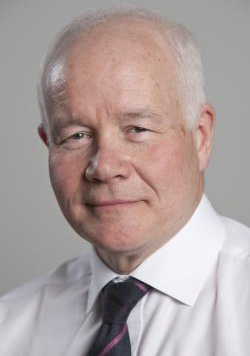Executives from big pharma pulled few punches on the opening day of eyeforpharma’s Barcelona 2013 conference, lambasting their industry for its failure to adequately serve patients and develop enough innovative products.
Ian Talmage, SVP, global marketing at Bayer and a 41-year veteran of the industry, told hundreds of delegates the story of how, 10 years ago, he was diagnosed with cancer and given just six weeks to live.
“Being very confident in my industry, I approached many pharma companies,” he recalled. “I asked: ‘What should I eat? How should I maintain my strength through chemotherapy?”
He failed to receive a single response.
“The industry that I had embraced for 31 years had failed me at the time I needed it,” he said.
Instead, he reached out to a patient group and immediately, he received valuable advice along with considerable support.
Talmage believes it is pharma’s responsibility to help people feel better, but he still sees a disconnect between industry and patients.
“I sometime wonder whether we [just] speak to the importance of the patient or whether we [actually] live up to it. I sometimes wonder whether we speak to it [just] because it’s politically correct.”
Per Hyllén, senior director at LEO Pharma, spoke of having had similar suspicions in his presentation.
“Some companies will look at a video once a month, or they might have a patient come in for a meeting, and suddenly they’re patient-centric,” he said. “It’s not about just saying that we are patient centric. It’s about truly listening, getting into that deep patient insight.”
According to Hyllén, LEO has made robust patient promises in all of its therapeutic areas.
“This means we really stand for what we do,” he said. “It’s a matter of changing the way your customer-facing units are working today.”
In another session, Keith Allan, head of global advocacy at Novartis, confessed to having been one of those execs guilty of not focusing enough on the patient.
“We need to be seen as part of the healthcare solution engaging meaningfully with patient groups, instead of being part of the problem, and I was one of those most guilty of doing that,” he said. “People say this is the era of the patient. Well, I say we never really left the era of the patient, but we got distracted by trying to make things too clever.”
Conference chair Nigel Brooksby, chairman, UK Life Sciences Skills & Strategies Board, also spoke to pharma’s responsibility toward patients in his opening remarks.
“Patients have always asked more from us than just medicines,” he said. “They want to make the best use of the medicines we’ve already discovered and they want medicines that are affordable. We have to create value and become more responsive to all our customers and to the patient in particular. The future is about creating new medicines that really offer something different. It’s that innovation that we’ve lost and we need to rediscover it to make a real difference in patients’ lives.”
Instead, said Bayer’s Talmage, “we created clutter, we advertised and we pushed. Can’t we just get on with being innovative and making our medicines available?”
Talmage added that while the innovation has been there, there is a long way to go.
“Around 50% of us in this room will die of cardiovascular disease, cancer or respiratory disease.” And, he continued, [disease] projections to 2030 do not look good. “We are absolutely in the place that we are needed.”
Another common thread in the morning sessions was the reputation of the industry. “There’s a lot of negative perception about pharma,” said Talmage.
Unfortunately, according to Novartis’ Allan, “There is no evidence that we are improving our relationship with [patient] groups—in fact it’s deteriorating.” He cited recent data from Patient View which surveyed patient groups on their perception of pharma and found that just 30% of patients thought pharma had a “good” reputation, with 40% feeling its reputation had declined over the previous year.
“We need to start listening and we need to react to that,” said Talmage. “People—including those working in pharma—are more trustworthy than ads. If we have customers talking about us, it’s better that we are there. But when [as an industry] we start looking at the challenges, we find reasons not to engage.”
LEO’s Hyllen believes digital engagement—or the lack thereof—starts in the C-Suite. “Working with social media needs to start at the top, anchored in senior management,” he said, “and not be something that comes out of the digital teams.”
And when trying to engage patients, stop using pharma speak, said Talmage.
“I don’t think they like it. They don’t like ‘patient journey.’ When I was diagnosed with cancer I was desperate to live, I was not on a ‘journey.’”
So, what of pharma’s future?
“Pharma still faces significant challenges,” said Brooksby. “We’re going to need even more radical surgery to our existing business models. Economic turbulence will continue. It’s the new norm. We just have to get used to it and form our strategy around it.”
Talmage believes we need to develop a much more integrated approach to healthcare. “The infrastructure, the systems … we cannot afford to keep going the way we are,” he said. “We have all the pieces but they’re not working together. The situation is that costs continue to increase and outcomes are not commensurate with the amounts being paid.”







